'Extraordinary work' underway to rebuild electric, water, cell grid after Hurricane Laura
As Hurricane Laura recovery rolls into its second week, weary residents in Louisiana’s hardest hit areas find electricity, air-conditioning and clean, running water still in short supply.
“They’re not sure when exactly we can get electricity here,” said Cindy Holland Demaskey, who lives in Hayes in east Calcasieu parish. “They’re telling us it might be two weeks because of all the damage.”
“It’s just been rough,” she said Wednesday, her voice breaking. Another two weeks would make it three full weeks after Laura roared ashore with 150 mph winds about 25 miles south of her home.
Martha “Tootie” Welch, 66, ripped out carpet in her home on Wednesday in Hackberry, in Cameron Parish, moving slowly but surely.
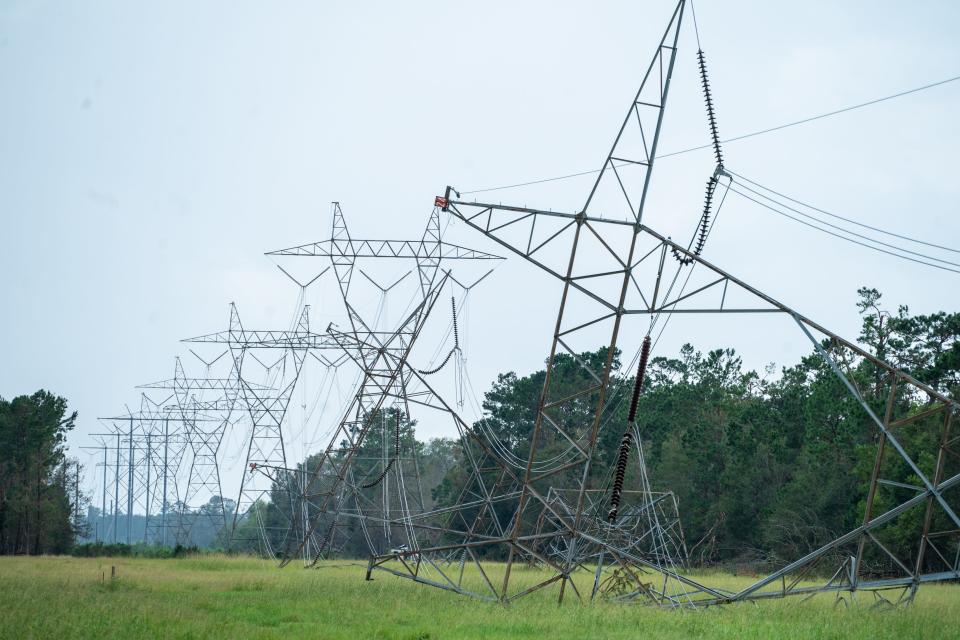
She could be weeks without power, some say, and she has no running water. But she doesn’t plan to leave. “We’ll probably stay right here,” said Welch, who's lived on the property all her life, sharing a street with family members. “It’s home. It’s my roots.”
“Everybody’s got it a lot worse than me," she said.
Demaskey and Welch are among about 270,000 customers in the state who remained without electricity a week after the storm passed. Power has been restored to about 75% of the customers in the region, said the Electricity Subsector Coordinating Council, an industry association. But getting the remaining 25% of customers back online will be a major challenge.
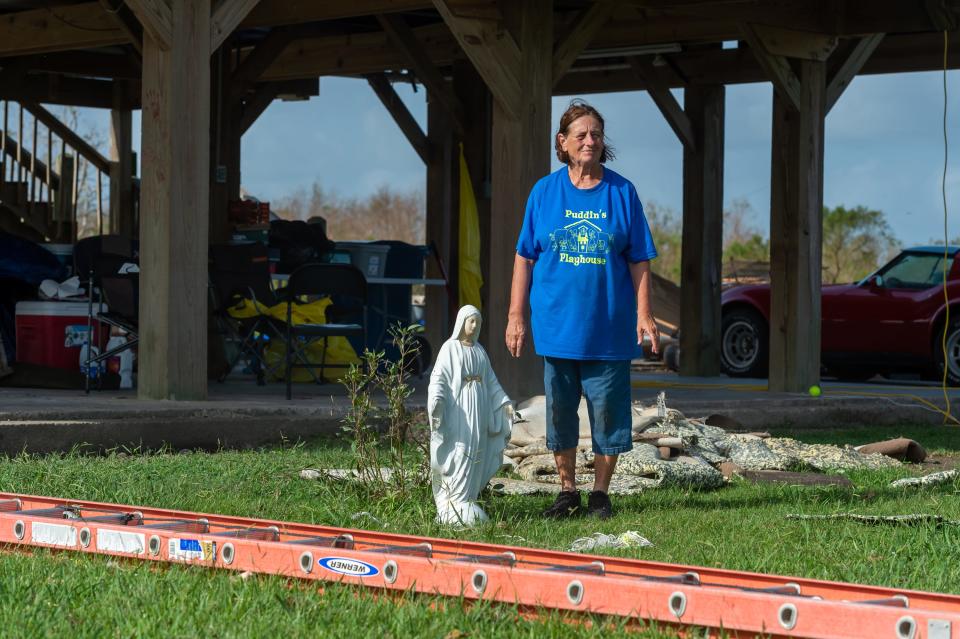
Gov. John Bel Edwards said that task could take another four weeks.
One of the two most intense hurricanes ever to make landfall in Louisiana, Laura toppled more than 500 massive towers with the high voltage transmission lines that carry electricity from power plants to communities like Lake Charles. It also damaged water and wastewater systems and knocked out cell towers that provide mobile phone service.
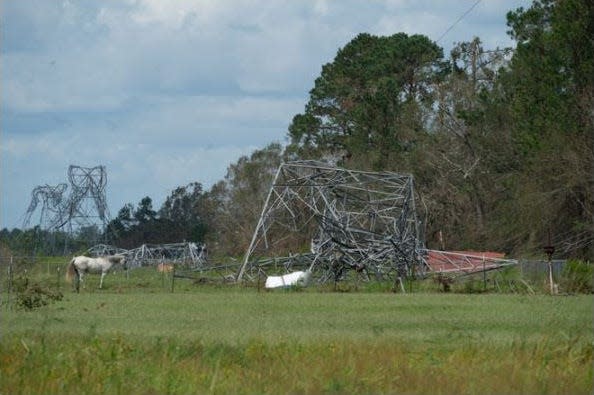
Entergy, the state’s largest electricity provider, completed its damage assessment Wednesday, concluding Laura took out 219 transmission lines, 1,108.17 miles of line and damaged 292 substations. The hurricane damaged 9,760 of the company’s poles, 3,728 transformers and 18,706 spans of wire.
To put the task into perspective, Scott Aaronson, vice president for security and preparedness at the electric institute, said just one 500 kilovolt transmission line in Southwest Louisiana had 72 structures damaged beyond repair.
“Just one of those structures takes three 18-wheelers worth of materials and 1,300 man hours to replace,” said Aaronson. “That is effectively 72 construction projects, in an emergency situation, as quickly as possible.”
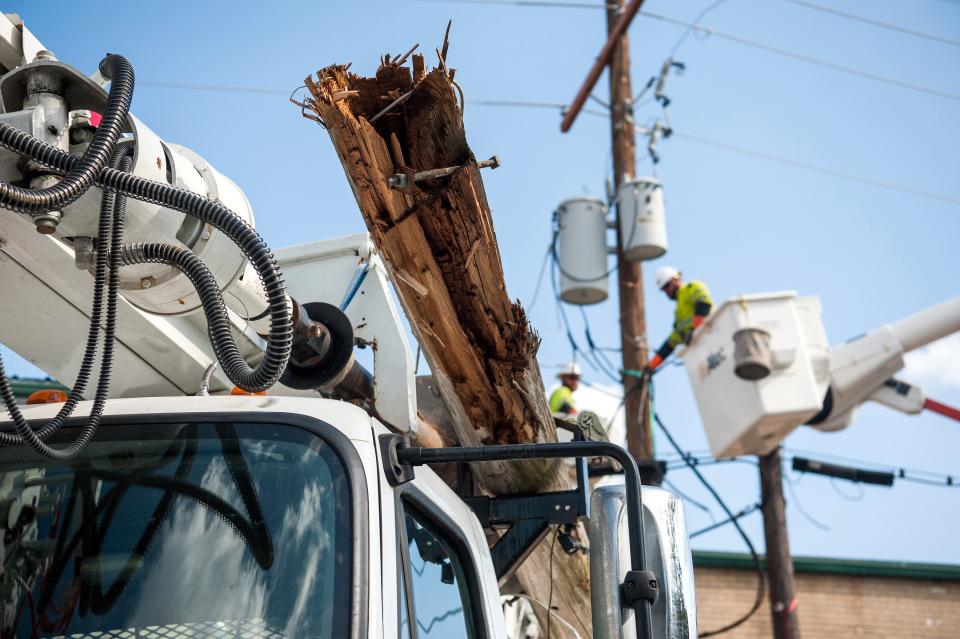
'Extraordinary work'
Each project takes roughly 80 people and typically involves cranes and helicopters to lift pieces, he said. In some cases, those towers are in remote locations, presenting logistical challenges such as forcing workers to get to the site via air boat.
Each of those lines must be rebuilt and each component inspected before electricity can flow through, said Entergy spokesman Neal Kirby.
This week, through pre-storm cooperative agreements, utility companies had 29,000 workers from 29 states, the District of Columbia and Canada working across the region, including Louisiana, Texas and Arkansas. Entergy had 8,300 workers in its Southwestern Louisiana service area.
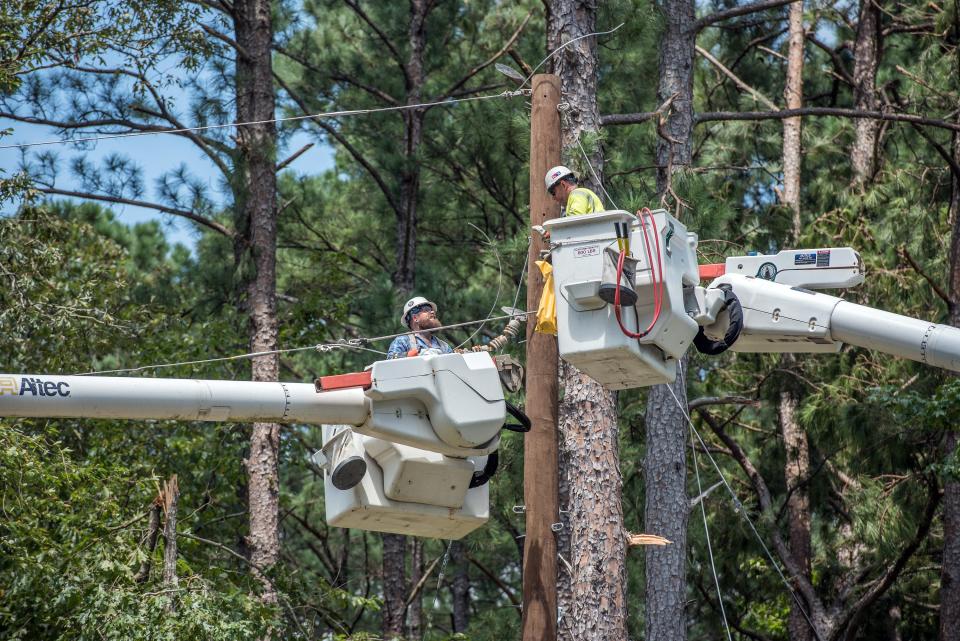
The crews are working in extreme conditions. Heat advisories from the National Weather Service keep warning it feels as hot as 106-114 degrees outside. The workers also are maintaining procedures to try to prevent the spread of COVID-19.
“Rest assured, there are extraordinary people doing extraordinary work to get that transmission system up and repaired and getting power delivered to those neighborhoods,” Aaronson said.
How to help: Relief efforts by Acadiana businesses aiding those impacted by Hurricane Laura
Every other day, Demaskey loads up her six gas cans and drives to the closest open gas station to replenish the gas she’s using to keep her life-saving generator going, she said. “Thank God it’s only 10 miles away.”
'Air to breathe'
Diagnosed with lupus after three trips to the emergency room in June, she considers herself blessed the roof of her home was only missing a few shingles. But the first night back in the house, she said the thermometer climbed to 102 degrees, in part because the windows have to be closed so the mosquitoes don't "carry you away."
The next day she bought a generator at a stand on the side of the road, putting $1,600 on a credit card she had just paid off, she said. “I have to have the air to breathe.”
Utilities also are working to get water systems and cell phone service up and running, but experts say those efforts aren't as organized or collaborative as the electric industry.
Lessons learned after other major hurricanes on the Gulf Coast — Rita, Katrina and Michael — helped lay the groundwork for Laura recovery, the experts said, but also show that rebuilding takes time.
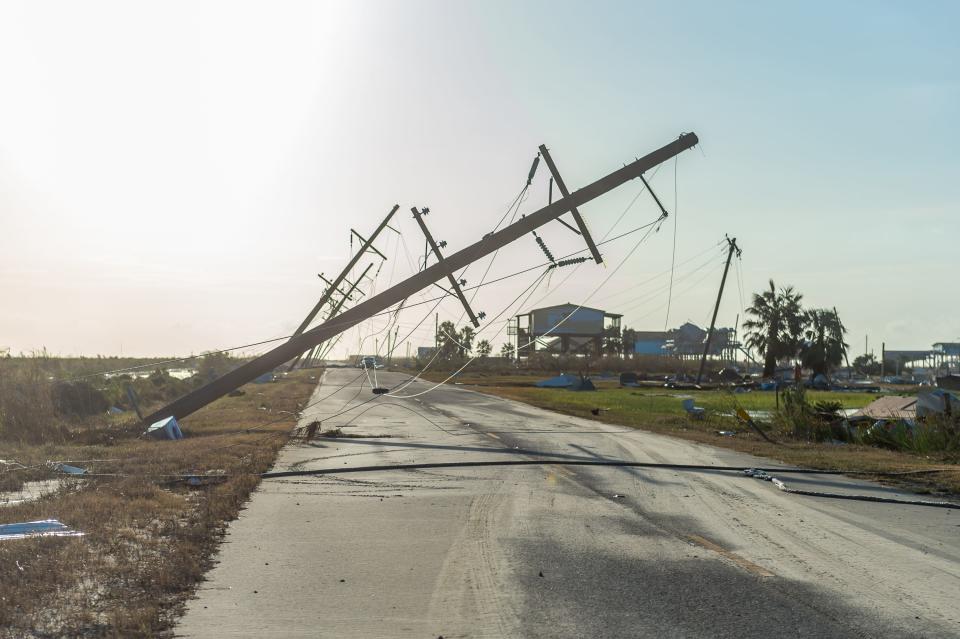
A Federal Communications Commission report after Michael, which hit the Florida Panhandle with 160 mph winds in October 2018, concluded nearly half the cell towers in Bay County, Florida were still down a week after the storm. Local officials found slow progress in connecting cell service, the report stated, “with a significant disconnect between the urgency those leaders conveyed in conversations with providers, and providers’ actions in the worst affected areas.”
In one case, cell phone providers reported that even after they restored service, it often failed again when crews restoring electricity and other utilities accidentally cut fiber cables dozens of times.The FCC report urged better communication among companies.
Even before Laura arrived, utilities experts were concerned about the impacts of a natural disaster on water and wastewater facilities.
“We’ve got a long way to go to restore the water,” Edwards said this week.“
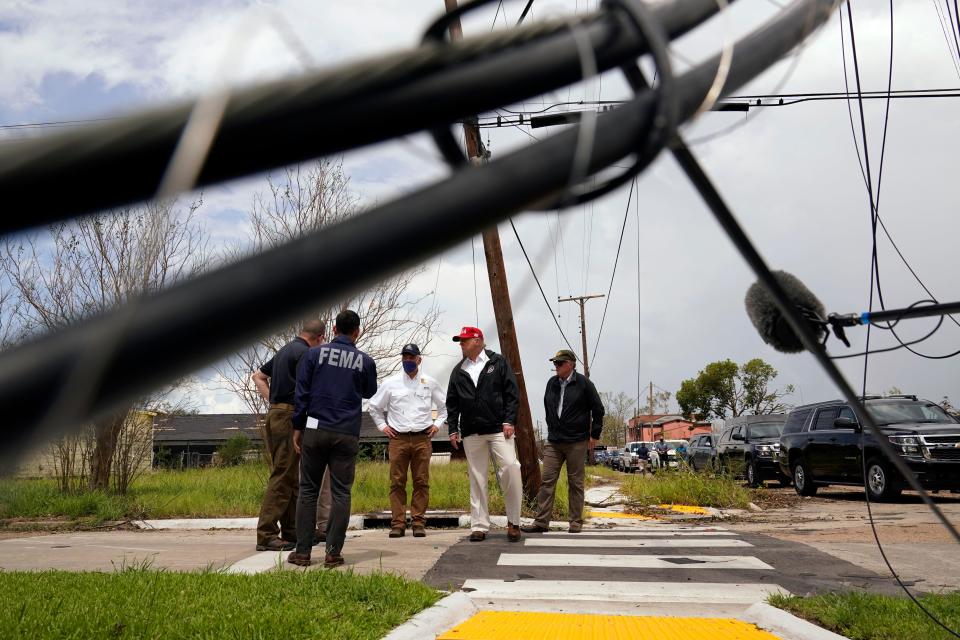
Aging water systems
As of Wednesday, an estimated 137,472 utility customers had no running water and another 419,304 customers were under boil water notices.
“Some of those wells, treatment plants and distribution lines were already teetering, even before hurricane season,” Edwards said. And quite frankly, we don’t know the degree to which it was the storm or pre-existing problems that we’re dealing with.”
In a 2017 “report card,” the American Society of Civil Engineers gave the state a “D+” grade on the state of its infrastructure, including the water and wastewater systems. The report found the state had made little progress since earning a “D” on the society’s 2012 report card.
More: Hurricane Laura damaged a Lake Charles Confederate monument, after parish officials voted to keep it
The committee saw the kind of impacts a natural disaster could bring, especially given the lack of investment in repair and replacement, said Kirk Lowery, a Baton Rouge civil engineer, who served on the committee that wrote the report card.
About 58% of the water systems in the state were built before 1960, and the design lives for such systems is typically anywhere from 50 to 75 years, Lowery said.
He estimated it could take up to six weeks to get water and wastewater systems fully back online.
The water and wastewater industries don’t bring in “a SWAT team” of workers like the electrical utilities do, he said. And they have to wait until electricity is restored in some cases to determine what has been damaged and then order the equipment necessary for repairs.
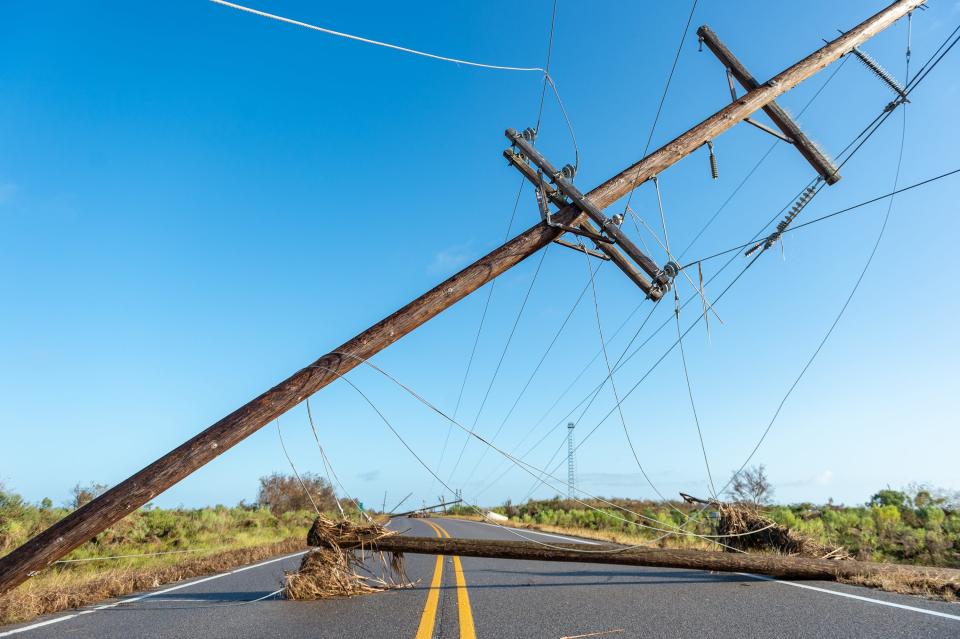
Replacing equipment during an emergency raises its own challenges, the experts said.
The big transformers attached to high voltage transmission systems are much harder to acquire, said Granger Morgan, a professor of engineering at Carnegie Mellon University and chairman of a 2017 National Academies of Science report on improving resiliency in the electrical industry.
Over the past several years, Morgan said utilities in the nation have made “quite a bit of progress" in terms of tracking stockpiles of some of those bigger pieces of equipment.
“If utilities have to order new equipment, that’s more of a challenge, he said. “We’re not making a lot of these in this country anymore.”
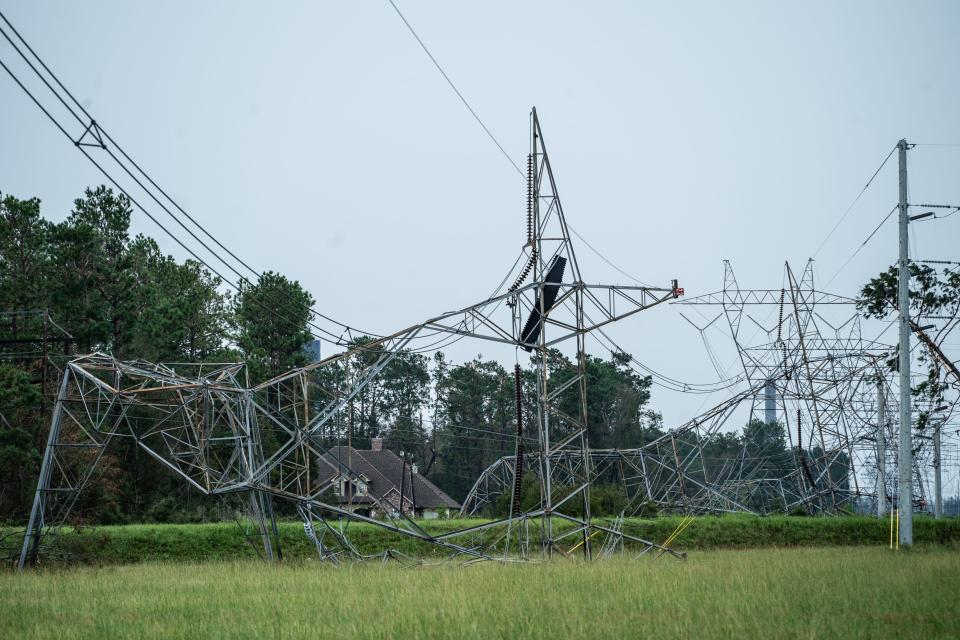
Questions about improving the ability to reduce damage or bounce back faster come up after every storm, Morgan said. One frequent topic is burying more utility lines. That presents its own challenges, he said, especially in low-lying areas subject to sea level rise or storm surge.
He’s recently worked on improving the electrical grid on Guam, which gets hit regularly by typhoons, he said. “They have pretty much replaced all of their old wooden poles with reinforced concrete poles.”
“The problem is, when you have a system that’s been completely flattened, you don’t want to screw around trying to figure out how to get more robust poles, you want to get stuff in place as fast as you can," he said. “If you’ve got people sweltering with refrigerators that don’t work, you don’t want to fool around with supply chains. Hurricane aren’t an efficient time to try to upgrade systems.”
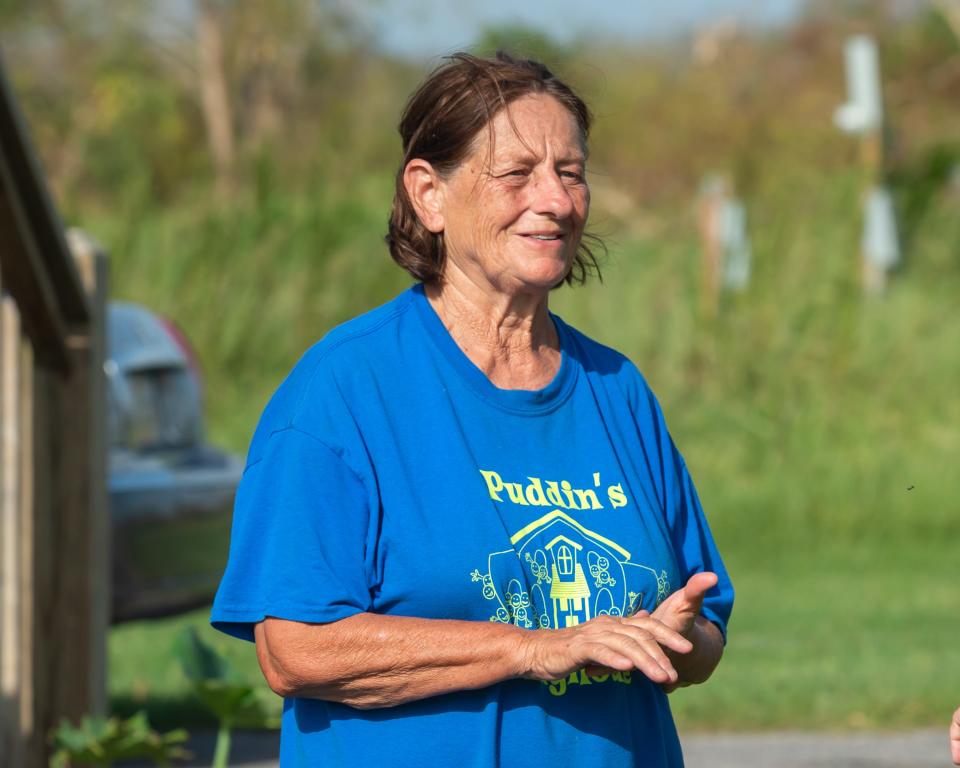
With her candles and flashlights in Hackberry, Welch planned to continue to rip carpet staples from her floor after nightfall. “I’m slow-moving," she said. "But the longer you leave it like that the more trouble you’ve got.”
She speaks from experience having weather hurricanes Rita in 2005 and Ike in 2008.
In Hayes, Demaskey looks forward to the day electricity is restored.
"I have it better than some. I'm not complaining," she said. "I'm thanking God for everything but it's just hard."
Lafayette Daily Advertiser reporter Leigh Guidry contributed to this report.
This article originally appeared on Lafayette Daily Advertiser: Hurricane Laura damaged utility grid, to take weeks to repair

